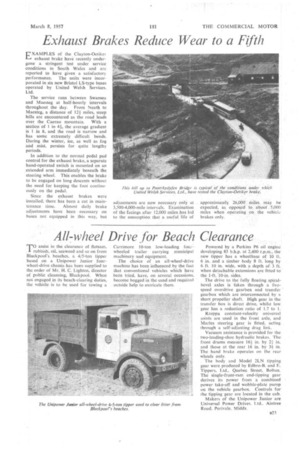Exhaust Brakes Reduce Wear to a Fifth
Page 57

If you've noticed an error in this article please click here to report it so we can fix it.
XAMPLES of the Clayton-Oetikei J-d exhaust brake have recently undergone a stringent test under service conditions in South Wales and are reported to have given a satisfactory performance. The units were incorporated in six new Bristol LS-type buses operated by United Welsh Services. Ltd.
The service runs between Swansea and Maesteg at half-hourly intervals throughout the day. From Neath to Maesteg, a distance of 12+ miles, steep hills are encountered as the road leads over the Caerao mountain. With a section of 1 in 44, the average gradient is 1 in 8, and the road is narrow and has some extremely difficult bends. During the winter, ice, as well as fog and mist, persists for quite lengthy periods.
In addition to the normal pedal pad control for the exhaust brake, a separate hand-operated switch is mounted on an extended arm immediately beneath the steering wheel. This enables the brake to be engaged on long descents without the need for keeping the foot continuously on the pedal.
Since the exhaust brakes were installed; there has been a cut in maintenance time. Almost daily brake adjustments have been necessary on buses not equipped in this way, but adjustments are now necessary only at 3,500-4,000-mile intervals. Examination of the facings after 12,000 miles has led to the assumption that a useful life of approximately 26,000 expected, as opposed miles when operating brakes only. miles may be to about 5,000 on the vehicle




































































































